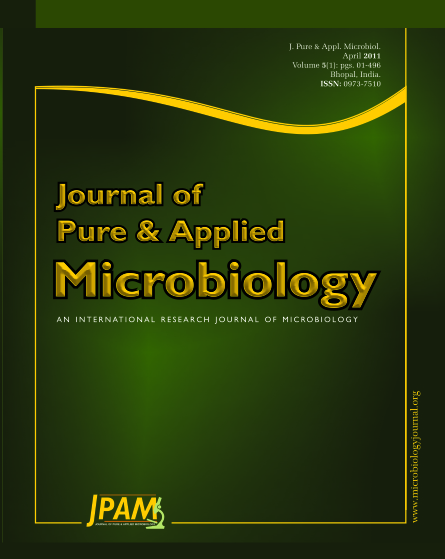The diversity of Salmonella and E. coli was studied from food of animal origin i.e. goat, pig and poultry meat. The quantitative estimation of colony forming unit, coliform count and Most Probable Number (MPN) was carried out. The identification of different strains of Salmonella and E. coli was carried out as per the keys given in Bergey’s manual. Total 265 meat samples were surveyed for bacterial colonization. The analysis of ANOVA exhibited that Coli form Count varied significantly in different meat samples. Studies on the source of contamination indicated that E. coli had higher rate of contamination from the implements and the infected animals, and serves as the opportunistic organisms to the person consuming such contaminated meat from the foods of animal origin. It was observed that certain environmental factors such as temperature was also one of the regulatory factors in establishment and further growth of the bacterial pathogen in different foods of animal origin.
Salmonella, E. coli, Food animals
© The Author(s) 2011. Open Access. This article is distributed under the terms of the Creative Commons Attribution 4.0 International License which permits unrestricted use, sharing, distribution, and reproduction in any medium, provided you give appropriate credit to the original author(s) and the source, provide a link to the Creative Commons license, and indicate if changes were made.


